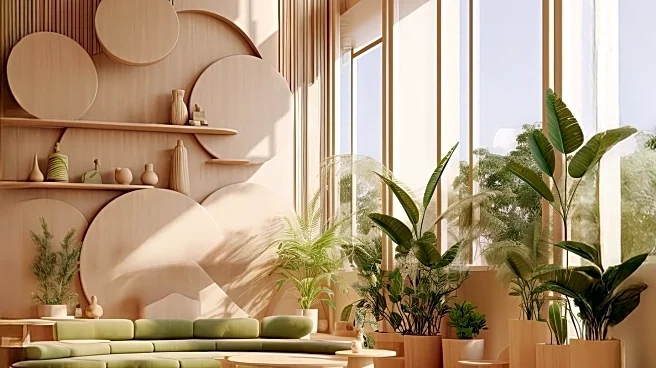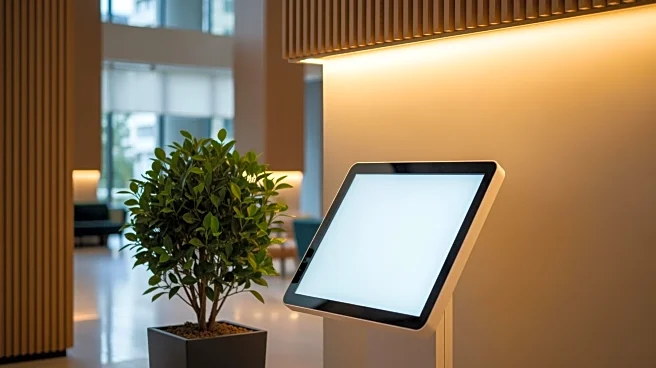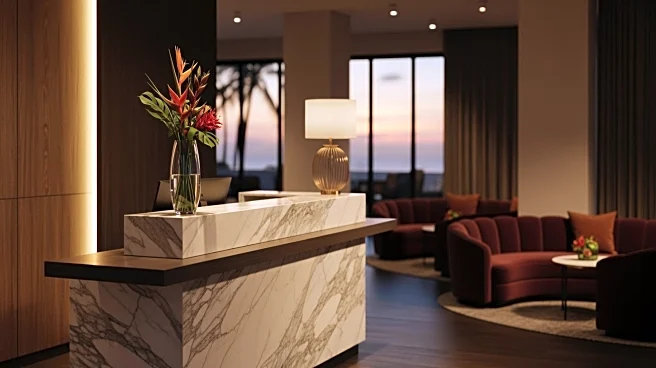What's Happening?
The hospitality industry is increasingly integrating biophilic design into hotel guestrooms to enhance guest experiences and promote well-being. Biophilic design incorporates natural elements into the
built environment, which has been shown to positively impact health and wellness. Studies indicate that exposure to outdoor green spaces can improve cognitive function, mood, and stress levels. Hotels like 1 Hotel Central Park in New York City are leading this trend by incorporating live plants, reclaimed materials, and filtered air into their architecture. This approach aligns with the growing demand for sustainability and wellness among Millennials, Generation Z, and Generation Alpha, who prioritize these factors in their purchasing decisions.
Why It's Important?
The shift towards biophilic design in the hospitality industry reflects broader societal trends emphasizing sustainability and wellness. As consumers increasingly value these aspects, hotels adopting biophilic design can differentiate themselves in a competitive market. This trend not only enhances guest satisfaction but also supports environmental sustainability by integrating natural elements and reducing reliance on artificial materials. The focus on health and wellness is particularly significant as it caters to the preferences of younger generations, who are expected to drive future market demand. By embracing biophilic design, hotels can improve their appeal and potentially increase occupancy rates.
What's Next?
As the demand for biophilic design grows, more hotels are likely to adopt this approach, leading to innovations in room design and architecture. The integration of technology with natural elements could further enhance guest experiences, offering personalized environments that adapt to individual preferences. Hotels may also explore partnerships with sustainability-focused organizations to enhance their offerings. Additionally, the emphasis on wellness could lead to new services and amenities, such as personalized nutrition and hydration hubs, AI-regulated sleep environments, and immersive storytelling experiences. These developments could redefine the hospitality landscape, making biophilic design a standard in hotel architecture.
Beyond the Headlines
The adoption of biophilic design in hotels may have ethical and cultural implications, as it encourages a deeper connection with nature and promotes environmental stewardship. This approach could influence guest behavior, fostering a greater appreciation for natural environments and sustainable practices. Furthermore, the integration of local cultural elements into room design could enhance guests' understanding and appreciation of the destinations they visit. As hotels become more attuned to the cultural and environmental aspects of their locations, they may play a role in promoting cultural preservation and environmental conservation.











